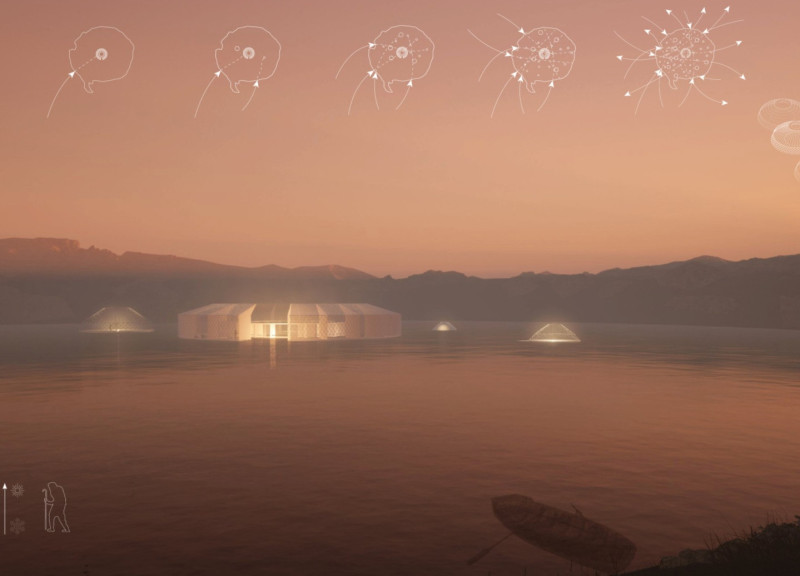5 key facts about this project
The architectural layout features a clear and comprehensive arrangement of spaces that allows for efficient movement and interaction. Designed primarily for multi-use occupancy, the project facilitates various activities while promoting a sense of community among its users. Spaces are defined with careful consideration of scale and proportion, ensuring that each area provides an appropriate level of comfort and accessibility.
The façade of the building stands as a testament to the careful selection of materials, each chosen for their aesthetic and functional qualities. The exterior showcases a combination of glass, steel, and locally sourced stone, creating a dialogue between transparency and solidity. This strategic use of materials not only enhances the visual appeal but also ensures durability and reduced maintenance. Large glass panels invite natural light into the interiors while offering breathtaking views of the surrounding landscape, encouraging occupants to connect with nature throughout their daily activities.
Special attention has been dedicated to the roofing design, which integrates a green roof system. This feature not only provides insulation and aids in managing rainwater but also creates a natural habitat for local fauna. The integration of such sustainable design elements is crucial in mitigating the ecological footprint of the structure, further aligning the project with contemporary architectural ethics.
Inside, the project continues to reflect the principles of functionality and user-centered design. The layout promotes an open floor plan in communal areas, fostering collaboration and interaction. Flexible spaces can adapt to varying needs, accommodating both large gatherings and private meetings. The use of tactile materials like warm woods juxtaposed with polished concrete creates inviting atmospheres that are both modern and approachable. The design philosophy emphasizes inclusivity, ensuring that all areas are easily accessible for individuals with varying abilities.
Unique design approaches are evident throughout the project, showcasing creativity in addressing real-world challenges. The incorporation of energy-efficient systems, such as solar panels and natural ventilation techniques, is a hallmark of the project’s commitment to sustainability. This has been augmented by intelligent building technologies that monitor usage patterns, optimizing energy consumption without sacrificing comfort.
The project also emphasizes community-oriented features, including public gathering spaces and interactive installations that invite both residents and visitors to engage with one another. These elements are not just functional but serve as catalysts for social interaction, reinforcing the building's role as a community hub. Such considerations reflect a mature understanding of current architectural trends that favor user engagement and environmental harmony.
In summary, this architectural project exemplifies a well-considered approach to design, rooted in principles of sustainability, community, and function. The attention to detail in material selection, spatial organization, and environmental integration showcases a project that is forward-thinking yet grounded in practicality. For those interested in delving deeper into this architectural endeavor, exploring the architectural plans, architectural sections, and architectural designs will provide valuable insights into the creative process and underlying concepts that shaped this project.























